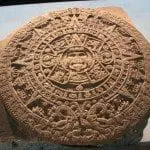[Originally published as Fish Fossils]
The existence of fish fossils gives excellent evidence of rapid burial. Although the common explanation for fish fossils is that dead fish sank into the muddy lake bottom and slowly became buried with sediment, which over time hardened into rock. This is not scientifically feasible. Dead fish usually bloat and float. Dead fish decompose within two weeks, if not already scavenged. Fish fossilization requires rapid burial. An underwater mud or ash flow quickly burying schools of fish offers a better explanation for the formation of perfectly preserved fish fossils.
Geologists once even went so far as to say, “By counting the thin layers of sediment, the age of the lake could be determined (as one can count the rings of a tree), and thereby the very old age of the fossils could be established.” It is now a known fact that fine sedimentary layers can form almost instantaneously as fast-moving water or steam sorts sediments into layers, as proven by the eruption of Mount St Helen, thus nullifying the layer-to-year ratio and erasing the million-year ages attributed to the fish fossils.





